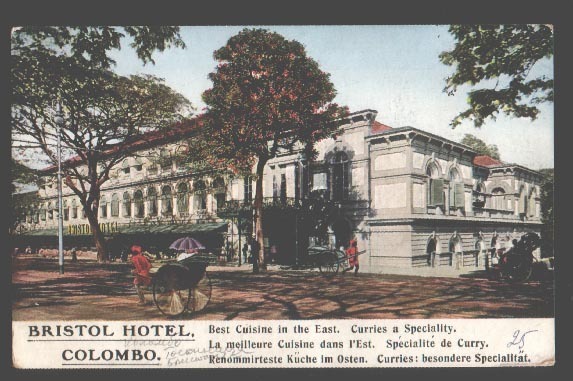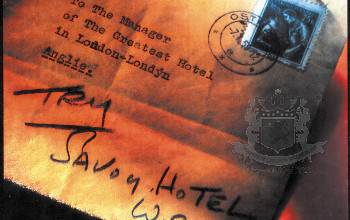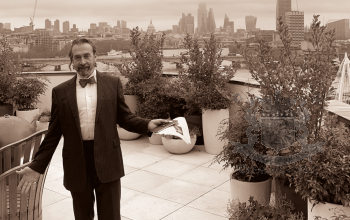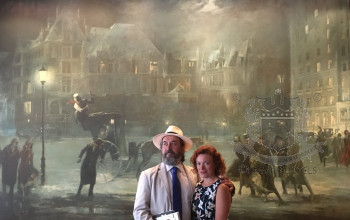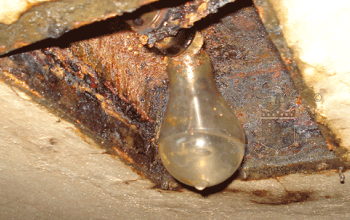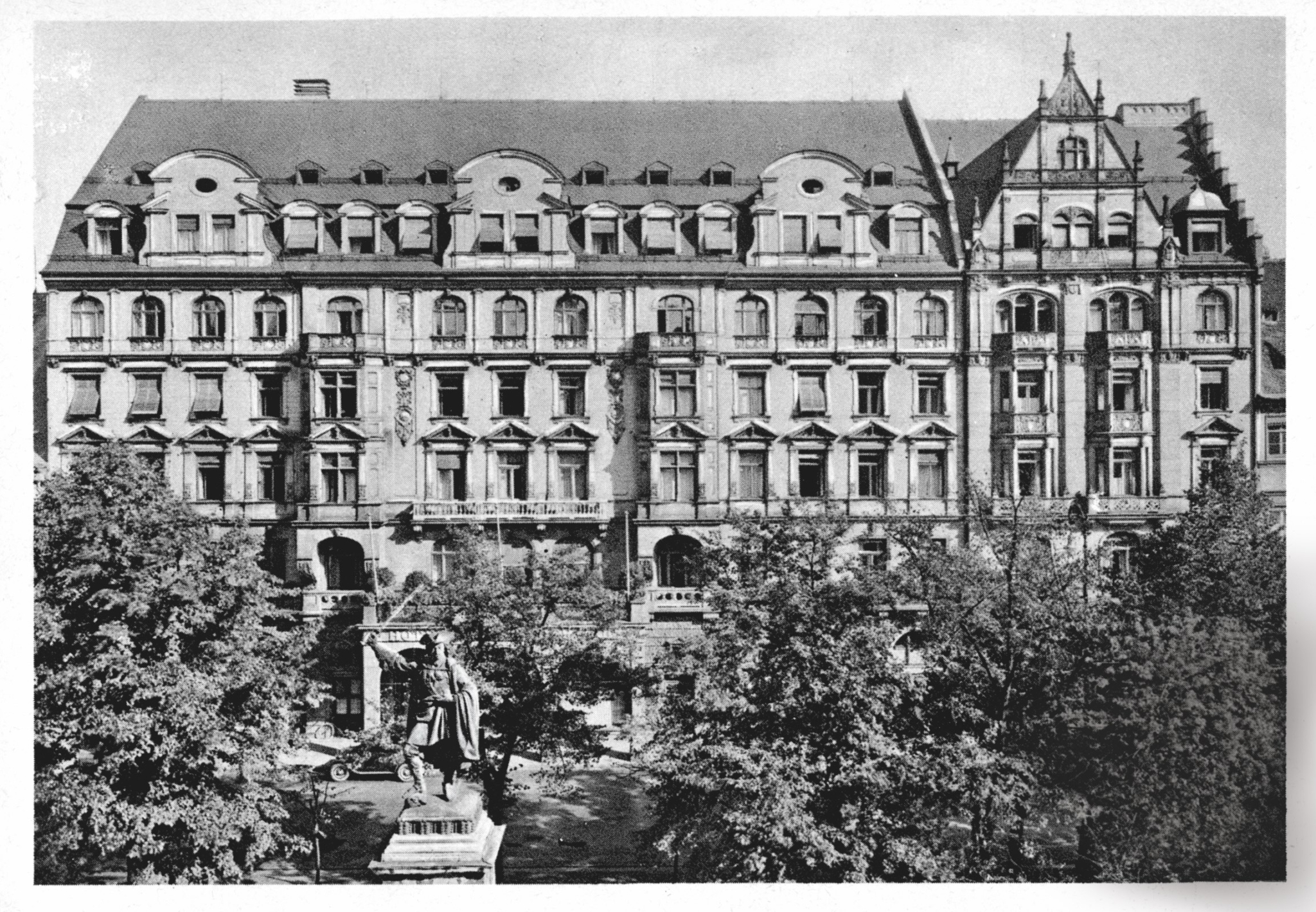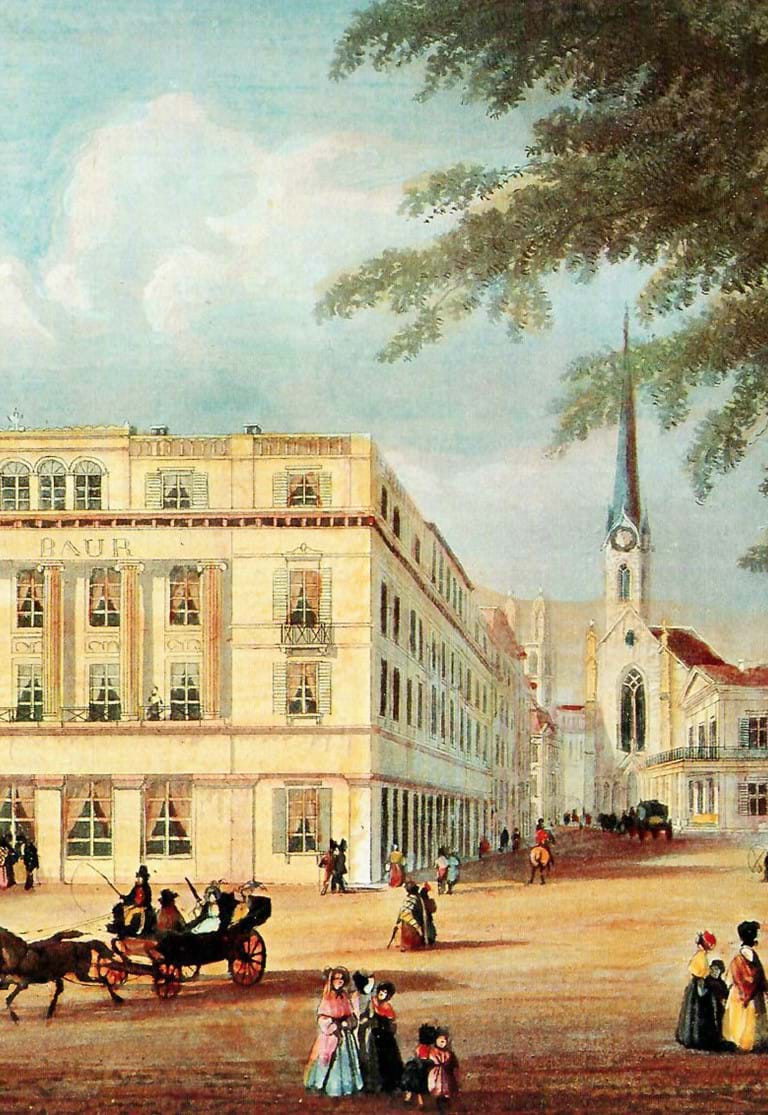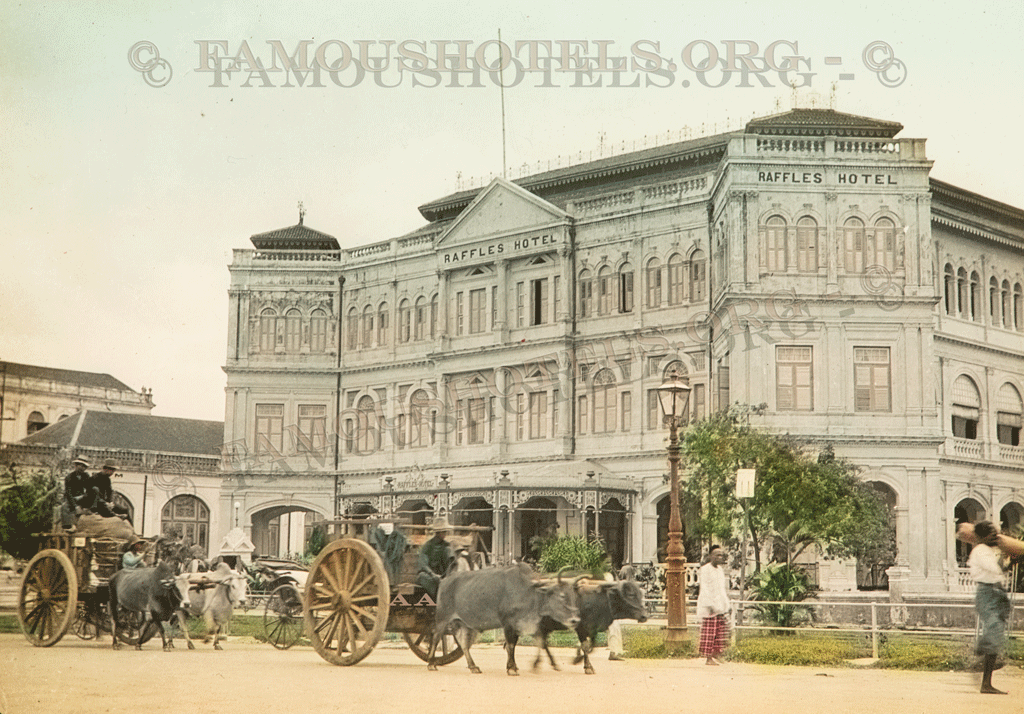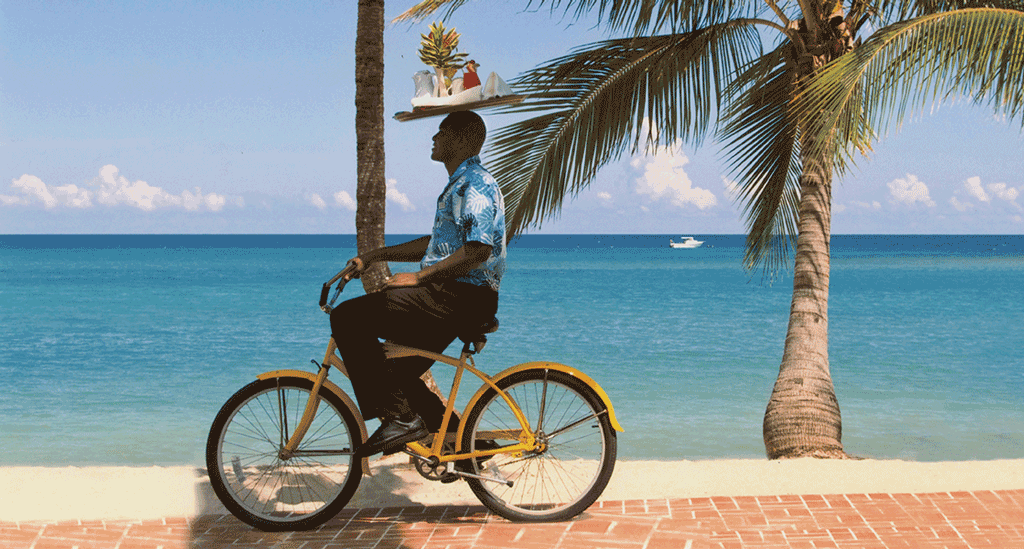Hotels lost in History
( words)
Austria
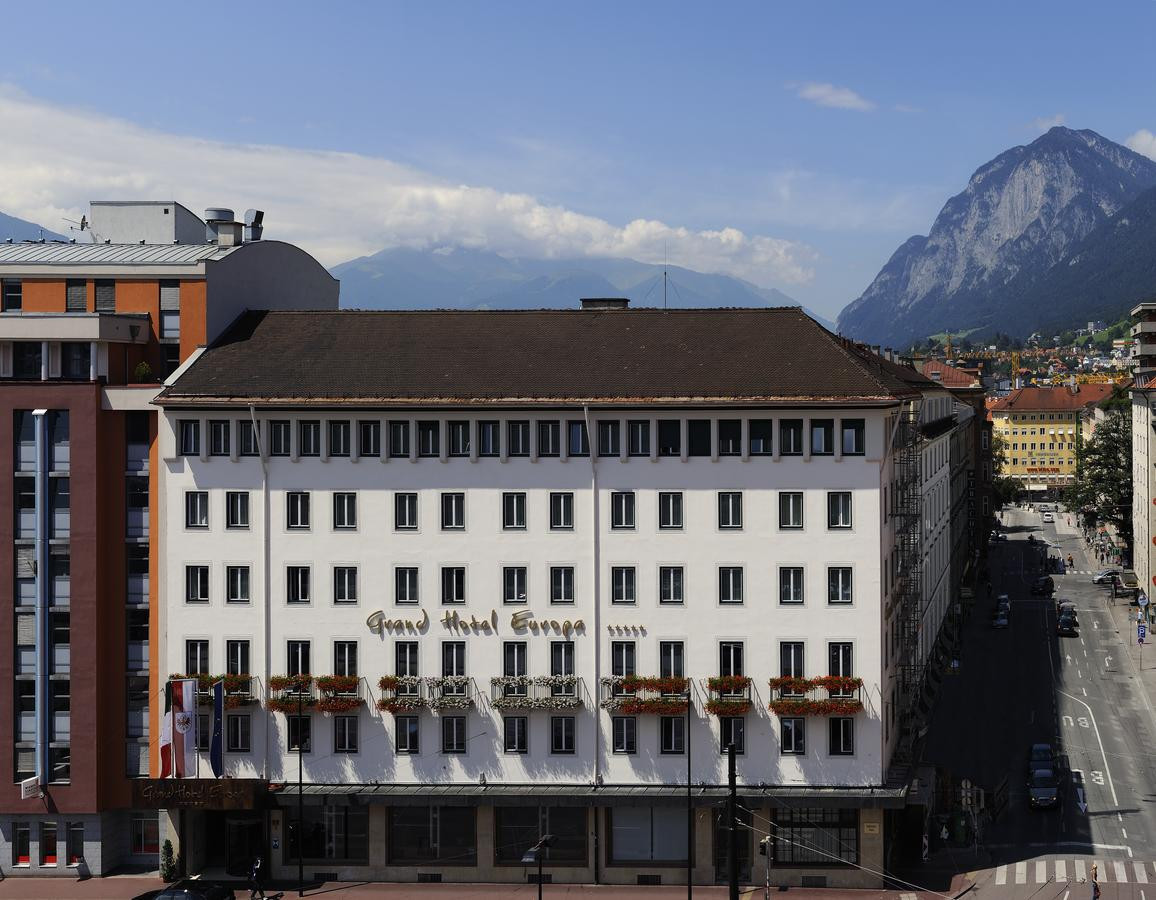
- Grand Hotel Europa Innsbruck used to be regularly in the social limelight of the Tyrolean provincial capital in the heart of Innsbruck. Its Baroque Hall from 1883 was the chosen venue for functions of all kind. Bavaria's King Ludwig II described the 5-star hotel as "the most beautiful place in Innsbruck to celebrate festive events". King Karl Gustav of Sweden found in the suites of the Grand Hotel the necessary rest and relaxation between the competition of the two Olympic Winter Games from 1964 and 1976. In 2007, the Italian "Palenca Luxury Hotels" acquired Innsbruck's most important hotel. Extensive renovation and expansion works - which have already been completed in the lobby, bar and reception area - followed in 2008/09. In 2020, the hotel closed and auctioned its inventory.
- Hotel Metropole, Vienna, opened 1873; by architects K Schumann und L Tischler, famous before the war, infamous headquater of the GESTAPO during 1939–1945, destroyed by bombs in 1945, never rebuilt.
-
Hotel Continental, Vienna, opened 1873, is today's Sofitel Vienna - a very chic modern architecture with interesting features. Destroyed in 1945 during the battle for Vienna, between Germany's army and Russian forces. Dating back to 1591 as a coach inn "Zum goldenen Lamm" and an other part used to be the hotel "Zum weißen Schwan", merged into "Hotel Continental" for the world expo in 1873 (with 200 rooms, large ball room for 600 pax and one coffee house).
- Hotel National, Vienna; built 1848, dating back to 1687 (original name of the inn: Zum goldenen Ochsen) - picture below.
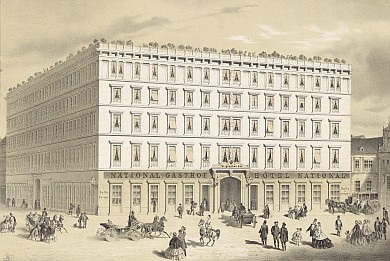
Hotel National, Vienna Architects: Ludwig Förster, Theophil Hansen. By 2017 an apartment building facing either renovation or demolition.
- Bad Ischl: Tallachini’s Grand Hotel, where Princess Sisi (later Empress Elisabeth) accepted Emperor Franz Josef’s proposal of marriage, was later renamed the Hotel Kaiserin Elisabeth and is now the Residenz Elisabeth. In Summer 1908, it hosted HRH Edward, the Prince of Wales.
- Semmering: Südbahnhotel — elegant resort of the Austrian-Hungarian empire, gathering place during the 1930s, and again in the 1950s. Lost momentum as entire region was abandoned in favour of more attractive tourism destinations. Stands as a testimonial to uncreative tourism and region management in Lower Austria, commanding a stunning view over the Semmering mountains.
Bahamas
- Nassau: Royal Victoria. The first luxury hotel in the Bahamas, built in 1861 and closed in 1971. The abandoned building sat vacant for years, gradually being stripped, until it burned down in the mid-1990's. A parking lot replaced it. The sprawling gardens of the hotel remain, however. Link to photographs here.
Chile
-
Carrera, Santiago de Chile: since 1940, its opening year, the hotel was originally a luxury apartment building, and designed to be part of the new Civic Center. 1940s-60s: The guest list included a mix of socialites, jet-setters and celebrities. 1985: Pro-democracy guerillas attempted to blow up Pincohet's office from one of the most desirable rooms in the hotel (see Legendary Stories). 2001: Hoteles Carrera increased its capital through the issue of 5,358,920 shares equivalent to US$6.2mil. In December 2004 the hotel closed for conversion to government offices.
China
- Macau, Hotel Bela Vista
-
Beijing Hotel (Huafeng), Beijing
1880s-1900: The Compagnie des Wagons-Lits built hotels like the Ghezireh Palace in Cairo, the Pera Palace in Constantinople, the Hôtel de la Plage in Ostend (Belgium), the Hôtels Terminus in Bordeaux and Marseille, and the Riviera Palace in Monte-Carlo. 1900: The foundation stones of the hotel were laid 1905: The company opens the Grand Hôtel des Wagons-Lits in Peking. The only hotel in the Legation Quarter, it was to accommodate travellers from Europe on the Trans-Siberian Express. A 1930s guidebook says the original building stood in a large garden ornamented by stone fishponds, sole relics of ancient imperial offices. 1915: The hotel's five-story red brick building was completed. Later known as the 'old building', this structure brought the hotel very brisk business. 1917: Prospering with good management and the booming tourism industry, the hotel received an investment boost of two million silver coins which added a seven-story French-style building (today's Building B). This new structure, which is now called the 'middle building', consisted of 105 suites furnished with central heating, telephone and toilet facilities, dining halls and kitchens, a hair saloon and a ballroom with a sprung floor. Otis brand elevators took guests to the bar and open-air terrace for dancing on the seventh floor. Foreign guests described it as the number one luxury hotel in the Far East. Its opening was attended by well over 800 distinguished guests who packed the lobby and dining halls. 1920s: The Thomas Cook Travel Agency set up an office in the hotel and rented the liner Franconia to ferry tourists to China. In those days, a model of the ship was displayed in the Western dining hall and a banquet with dancing would be thrown around the model for each group of new arrivals. 1922: The Hong Kong Hotel Company acquired 85 percent of the Shanghai Hotels Limited, which held 60 percent of the share capital of the Grand Hôtel des Wagons-Lits. 1937: The '1937 Incident' when Japan invaded China triggered a slump in business. The hotel was taken over by the Japanese during their occupation of Beijing. 1945: After World War II, the hotel was taken over by the municipal government of the Kuomingtang, after the war. Its business remained slack for the instability of society and the lack of foreign tourists. 1949: The People's Republic of China named Beijing its capital and offered the hotel a new lease of life. State and Diplomatic functions had to be held in a place with Chinese characteristics and high popularity 1954: Completion of a new wing. 1974: The old brick building was pulled down and a new 89-metre structure put in place. At the time it was the highest building in Beijing.
Egypt
- Cairo: Shepards — burnt down
- Continental-Savoy (Cairo), still standing, but empty
England
London
- Hotel Cecil, built in 1896, a large hotel in the Strand in London, England. It was named for Cecil House, a mansion that had occupied the same site in the 17th century. Designed by architects Perry & Reed in a "Wrenaissance" style, the hotel was the largest in Europe when it opened with more than 800 rooms. The proprietor later went bankrupt and was sentenced to 14 years in prison. The Cecil was largely demolished in Autumn 1930, and Shell Mex House was built on the site. The Strand facade of the hotel remains, with, at its centre, a grandiose arch leading to Shell Mex House proper.
- The Grand Hotel (we have reasons to believe that it was the first in the world by this name) had opened in January 1774 (by David Low), but ceased to exist in the 1880s.
- Basil Street Hotel was an oasis of English charm, run by the same family for 3 or 4 generations, just behind Harrods. Beloved of the hunting, shooting fishing set, and home to the famous Parrot Club it closed around 2005 to be stripped and turned into offices. The collection of antiques furnishing the hotel collected by the family took days to sell.
-
Grillon’s Hotel
-
Pulteney Hotel
-
To celebrate the defeat of Napoleon at the Prince Regent’s Grand Jubilee celebration in 1814, while Napoleon sailed for Elba, France’s King Louis XVIII took rooms at Grillon’s Hotel on Albemarle Street. Another popular hotel among foreign royals staying in London was the Pulteney Hotel, named after Pulteney, Earl of Bath, who had resided in the building before it became a hotel. It was located on the west corner of Bolton Street at 105 Piccadilly.
-
France
Nice
-
Excelsior Regina: today appartements; built in between 1895 and 1897 as a hotel for the royal faces and for the rich aristocracy who used to visit Nice in the late 19th century, the Excelsior Regina Palace is at present an apartment building which has lost nothing of its past architectural splendor. It is located in the hilly and tranquil Cimiez. The history of the construction of the Excelsior Regina Palace is related to the name of Queen Victoria of England who promised she would visit the French Riviera more often provided that a royal residence to match her reputation was built.
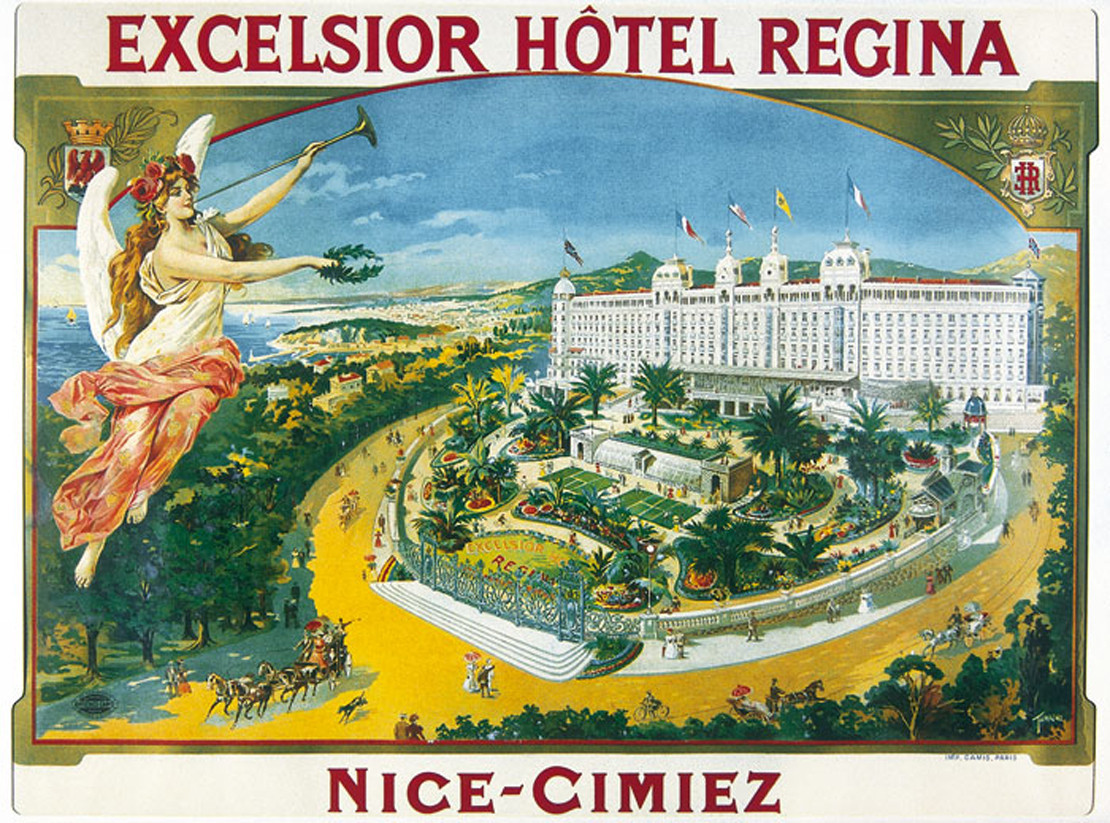
The building bristles with decorative elements characteristic of the Belle Epoque period. Lush bas-reliefs, glass marquees, picturesque attics and oriels peg out the white façade of the building. Parts of the Excelsior Regina Palace and the garden stretching in front of it, including the marble statute which depicts Queen Victoria (a monument placed at one of the garden entrances) enjoy the statute of historical monument. They were listed as such in 1992. Source: [url=http://www.nice-tourism.com/en/nice-attractions/historical-edifices-and-landmarks-in-nice/excelsior-regina-palace.html]http://www.nice-tourism.com/en/nice-attractions/historical-edifices-and-landmarks-in-nice/excelsior-regina-palace.html[/url]
Beaulieu sur Mer
-
Bristol Palace: True architectural masterpiece of the Belle Epoque, the Rotonde de Beaulieu rises in front of the sea and catches the eye of the passers-by and visitors of the town. Large circular room with glass-faced apses and a cupola with cut-off sides, the Rotonde is a former outbuilding of the Hotel Bristol, built between 1899 and January 1904 at the request of the British clientele of the palace to serve tea. This lounge was built in the south continuation of the building by the same architect, the Danish Hans-Georg Tersling. The Hotel Bristol, financed by a London furniture manufacturer, Sir John Blundell Maple, was built in record time, like many palaces on the Riviera during the Belle Epoque, between February 1897 and December 16, 1898. Inaugurated on January 5, 1899, the palace comprises 300 luxuriously equipped rooms, including bathrooms fed with heated sea water, spread over 5 floors with 60 rooms per floor. The building has high roofs evoking the style of an English castle. On March 28th 1911, in the evening, fanned by a strong wind, a fire broke out in a chimney and spread to the top two floors of the building and to its entire cover. Following the intervention of the firemen of Beaulieu and Nice and of the Chasseurs Alpins, the fire is mastered by flooding the upper floors. Thanks to the reinforced cement structure of the building, the lower part of the building remains relatively intact, the fire reducing the upper two floors to nothing.
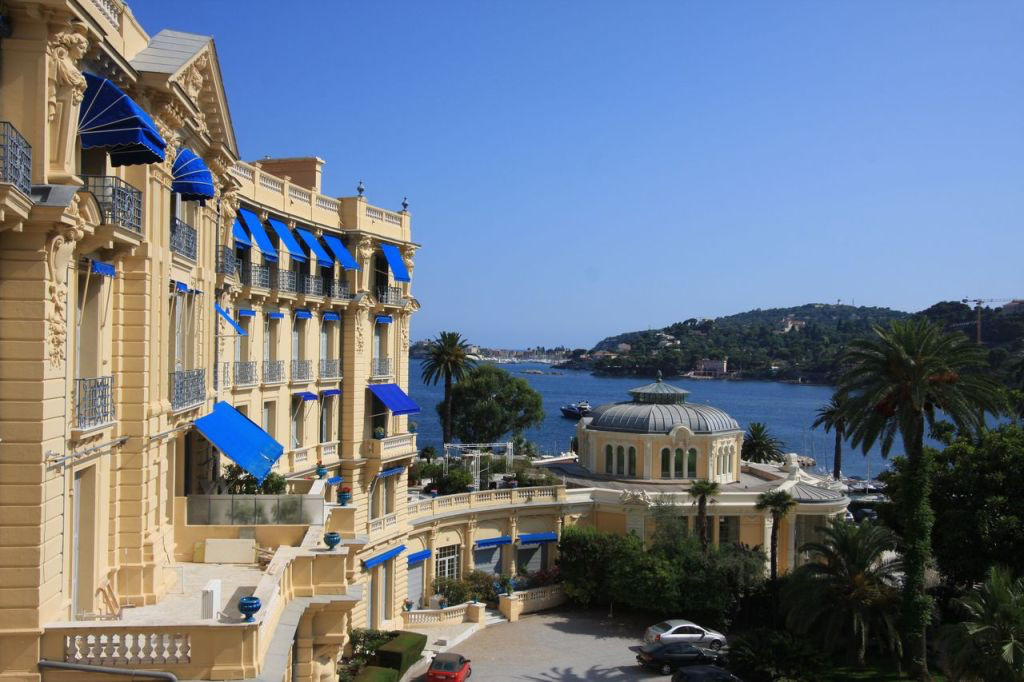
The rest of the hotel is quickly rehabilitated and the Bristol reopens for the winter season of 1911-1912, amputated from the destroyed floors and with a classic roof in red tiles with a slight slope. Converted into a high-end condominium by the promoter Saglia in 1954, the Bristol loses part of its gardens as well as the tennis courts, ceded to the municipality of Beaulieu. The building retains its original appearance, decoration and part of the lobby. La Rotonde was for his part neglected and left without maintenance, threatened with demolition and finally expropriated for the benefit of the municipality in the 1970s. Transformed into a conference center in 1982 and operated by the Partouche group, it will not be any more used from 2001. Again abandoned during 10 years, it now shelters, since October 2011, the Salons de la Rotonde Lenôtre and took back its festive vocation and initial receptive. -
source: http://www.agencebristol.com/en/news/the-bristol-and-the-rotonde
Germany
Leipzig
- Hotel de Prusse (1805-1905), Hotel Preussischer Hof (1905-1921)
- Bühlerhöhe: Schlosshotel Buehlerhoehe (Bühlerhöhe): officers home since 1918; luxury hotel between 1986 and September 2010. Closed due to low business.
-
Pflaums Posthotel Pegnitz: An inn that perfectly illustrates the European tradition of a single family`s involvement in a highly personal business over centuries. Pflaums Posthotel Pegnitz, opened in 1707, was owned and run by the founding familiy for 11 generations. As the inn is only 19miles from Bayreuth, it was filled with celebrities during the music festival, and trough much of the rest of the year as well. The 5 star superior rated property has two award winning restaurants 'and 'Outdoor Dining'; . Golf, Spa and conference facilities for incentives and small meetings, Open All Year. Hotel of the Year Germany. Grand Award and Golden Key for Interior Design. New York. Designer Magazine and American Hotel and Restaurant As. 1707 opened under the name Gasthof Post Schwarzer Adler by Heinrich Friedrich Pflaum (with five rooms) Recently a boutique design and arts hotel with ony 25 individually designed rooms, run by Hermann Pflaum, one of the leading chefs of Europe. It closed in 2016.
Hongkong
- Hong Kong Hotel — the "mother" of the Hong Kong – Shanghai Hotels company
- Repulse Bay Hotel, one of the last remaining colonial style buildings in Hongkong until it was demolished to give room for a high rise apartment building ca. 1985. It had a huge balcoly with a view of the South China Sea and was an important part of Hongkong history when it was torn down. The veranda is said to have been rebuildt somehow, but the old atmosphere must be gone forever.
Hungary
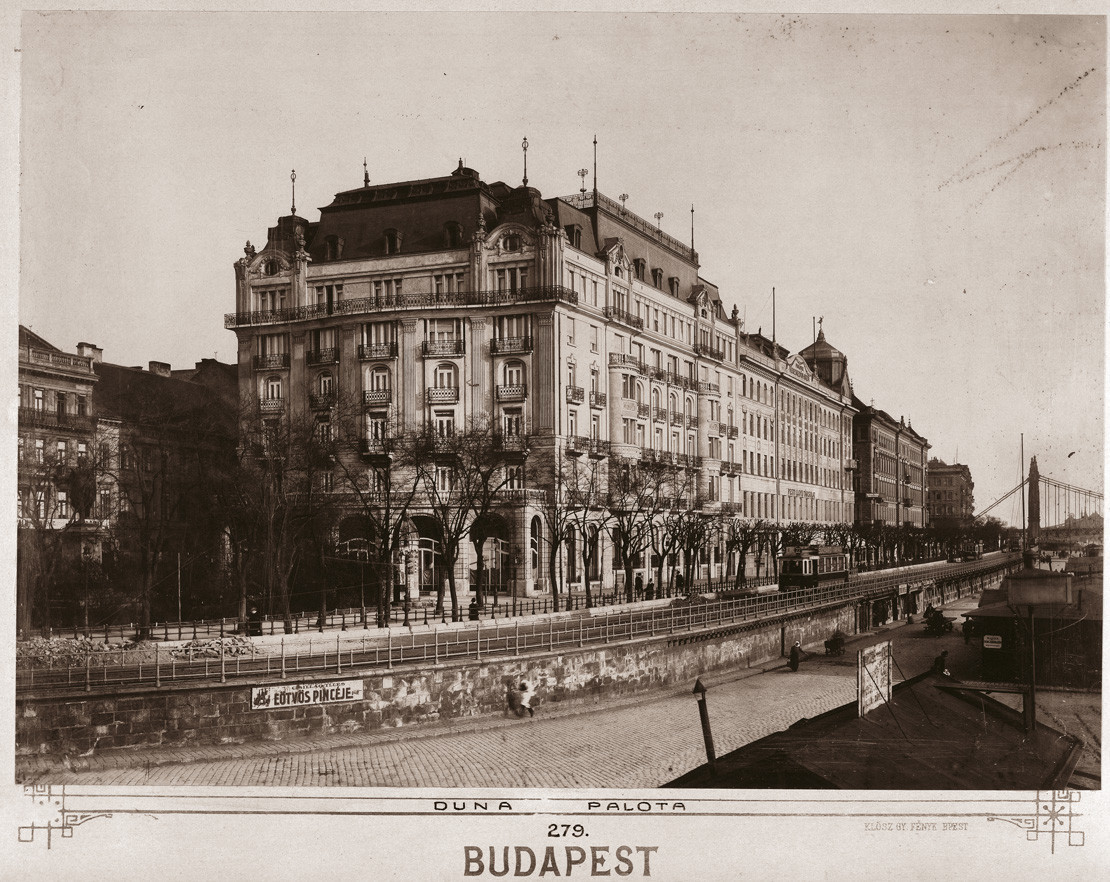 Budapest — Hotel Ritz — one of the "Ritz" franchise projects —it opened in 1913 with 120 suites, a reading room, a reception and banquet hall, a winter- and a rooftop-garden, a café, a restaurant, a bar, a barbecue room, central heating, three passenger and four service lifts. Despite the professional management of Károly Vásárhelyi, in 1916, the luxury hotel went bankrupt in the recession due to the First World War.
Budapest — Hotel Ritz — one of the "Ritz" franchise projects —it opened in 1913 with 120 suites, a reading room, a reception and banquet hall, a winter- and a rooftop-garden, a café, a restaurant, a bar, a barbecue room, central heating, three passenger and four service lifts. Despite the professional management of Károly Vásárhelyi, in 1916, the luxury hotel went bankrupt in the recession due to the First World War.
In 1913, Mrs César Ritz, Marie, personally supervised the opening. It was reopend as Duna Palota (Danube Palace). On January 15, 1945, the hotel was bombed and finally flushed for several days. The ruins were removed in 1947. From 1981, the Hotel Forum (now InterContinental Budapest) stands in its place.
India
- Calcutta Great Eastern built by David Wilson in 1841 Spence's by John Spence, before 1830 Grand, by Stephen Arathoon, opened in 1911, closed in 1937.
Indonesia:
- Hotel des Indes was one of the oldest and most prestigious hotels in Asia. Located in Batavia (now Jakarta), in the Dutch East Indies (now Indonesia). The hotel had accommodated countless famous patrons throughout its existence from 1829 to 1971. Before being named Hotel des Indes, a name suggested by the writer Multatuli, it was named ‘Hotel de Provence’ by its first French owner and for a short spell went by the name ‘Hotel Rotterdam’. After Indonesian independence it was renamed ‘Hotel Duta Indonesia’, until it was demolished to make way for a shopping mall. >>> This hotel should not be confused with ‘Hotel des Indes’ in The Hague, the Netherlands. Details on wikipedia.
Italy
Venice:
- The Grand Hotel des Bains was one of the famous hotels on the Lido of Venice. Built in 1900 to attract wealthy tourists, it is remembered amongst other things for Thomas Mann's stay there in 1911, which inspired his novella Death in Venice. Luchino Visconti's film of the novel was shot there in 1971. The hotel was also used as Shepheard's Hotel in Cairo in the 1996 film The English Patient; Diaghilev died at the hotel in 1929. Until 2010 the hotel was frequented by movie stars during the Venice Biennale. In 2010, the hotel was closed to be converted into a luxury apartment complex, the Des Bains residences. As of September 2017 the hotel is still awaiting renovation. A large fence surrounds it, with a guard employed inside.
- Rifugio Guglielmina / Ricovero al Col d’Olen It was 1878 when Ricovero al Col d’Olen was first inaugurated: it was the third among the 8 hotels founded, or run, by the Guglielmina family between the last half of the nineteenth century and the first half of the twentieth century. Giuseppe Guglielmina was a humble shoemaker from Mollia: the reason for the fast growth of its hotel business can be find in the entrepreneurial spirit of many public figures of the time as well as in the atmosphere of openness to tourism which followed the conquest of Monte Rosa. As a matter of fact, only eight years after the rise to Signalkuppe (today named Punta Gnifetti), Giuseppe Guglielmina and his family were able to run the Albergo del Monte Rosa, inaugurated in Alagna in 1850 and which was later expanded; then, they managed to run the Albergo delle Alpi in Riva Valdobbia in 1871, the Ricovero del Col d’Olen in 1878, the Albergo d’Italia in Varallo Sesia in 1879, the Albergo del Mottarone on the Maggiore lake in 1884, the Hotel Bellevue Alpino in Gignese in 1900, the Hoten Royal in Ospedaletti Ligure in 1901 and the Grand Hotel Eden in Santa Margherita Ligure in 1090. Moreover, the newspaper of the time record their presence even in Sicily, in Palermo, where they ran the Ristorante Cafè Chantant on the occasion of the Universal Exposition in 1981. Unfortunately Rifugio Guglielmina has been completely burned down. The fire started in the early morning of 22 December 2011 and couldn't be stopped because of strong wind, that did not allowed firemen to reach Col d'Olen.
Japan
- Kobe
The Tor Hotel was constructed in 1907 and decorated in the style of a Swiss chalet by Alfred Mildner, a German hotelier born in Alcase Lorraine, because the popular Oriental Hotel near the port was overcrowded each time passenger ships arrived. It catered to visiting dignitaries and tourists as well as wealthy Japanese and foreign residents. The hotel received its name from it location, tor, a Cornish word for ‘rocky hill’. Soon people started to call the road leading to it ‘Tor Road’. The hotel was located on the northern end of Tor Road, near the present-day location of the Kobe Club.
The Tor Hotel burned down in 1950, and little now remains of the earlier history of the site except for the giant Himalayan cedars in the front car park, thought to have been planted around 1890 by Arthur Greppi, a European businessman who had lived on the site before the hotel opened in 1908. There is also one small, red torii gate – all that remains of an Inari shrine that was located in the hotel garden and had several torii leading to it.
Lebanon
- St. Georges of Beirut was the place where Mr. Philby held court in the bar for seven years until he suddenly disapeared before reappearing in Moscow. The hotel or what is left of it, was built on one of the most valuable pieces of sea side property in central Beirut in the 1930s and became a gathering place for diplomats, reporters and spies. Yes, for once this cliche can be applied. In the sixties and early seventies, in Beirut's golden years, presidents, Hollywood stars and the rich Golf arabs, stayed at he hotel while visiting The Casino du Leban in Jounieh, Pepe Abed fish restaurant in Byblos or the Roman ruins in Baalbek. Lebanese-Palestinian writer Said K. Aburish has devoted a 200 page book to "The St. Georges Hotel Bar", published by Bloomsbury, London 1989. The destruction of the hotel in the so-called war of the hotels in December 1975 is vividly described by the American correspondent Jonathan Randal in his book "Going All the Way: Christian Warlords, Israeli Adventures and the War in Lebanon (Viking 1983). Randal was held hostage in the building during the fighting.
- The slim hope of the owner to rebuild the hotel was finally shattered by the powerful road bomb that killed prime ministe Rafik Hariri in February 2005. The neighbouring high rice Holiday Inn was also destroyed in 1975 and is, together with the St. Georges ruin, standing as an emty monument over the civil war.
- The beautiful Phoenicia Hotel re-opened as The Intercontinental some years ago but was also forced to close for a while in 2005 due to the Hariri bomb.
Malaysia
- Kuala Lumpur: Railway Station Hotel
- Penang: Runnymede Hotel
- Penang Hill: The Crag
Mozambique
- Beira: The Grande Hotel Beira was a luxury hotel in Beira, Mozambique that was open from 1952 to 1963. It continued to be used during the 1960s as a conference center and swimming pool. During the Mozambican Civil War (1977-1992) it became a refugee camp. The hotel opened in 1954, when it was billed as the "pride of Africa," and was widely regarded as the largest and most exquisite hotel on the continent. Its owners intended to include a casino, but failed to secure the necessary government authorization. The hotel was never profitable, and never attracted the wealthy clientèle it was intended to. It closed as a hotel in the early 1960s. The swimming pool and conference rooms continued to be used during the 1960s and even after the independence in 1975. The last event held in the hotel was the new year's eve party in 1980-81.
After independence in 1975 its basement was used as cells to hold political prisoners. Some members of the police and army started using the third floor as their living quarters. After 1981, it was taken over by the general population. The new guests used the entire parquet floors as fuel. The building has no running water or electricity, and is currently inhabited by more than 1,000 people.
Journalist Florian Plavec describes a visit to the hotel in a July 2006 feature in the Austrian newspaper Kurier. According to his accounts, virtually everything of any value has been looted from the hotel, including its marble and bathroom tiles, wooden flooring, sinks, and bathtubs. The former pool now serves as a water collector for clothes washing, and the former pool bar as a urinal. The hotel has also experienced structural damage, as trees continue to grow out of terraces, and floors collapsed.
The hotel in its actual state of decay has been shot by South-African photographer Guy Tillim in his serie "Avenue Patrice Lumumba"in 2007 (published by Prestel Verlag).
- Xai-Xai: Chongoene Hotel: Ruins remain the only victim of a bygone era of the Chongoene Hotel. Recently the South African company East Coast Development Corporation has shown interest in rehabilitating the hotel.
Pakistan
- Peshwar: Deans Hotel
Sri Lanka
Colombo
- Hotel Bristol
Switzerland
- Montreux Grand Hotel National, opened in 1875 as the first grand hotel in the resort on the Swiss Riviera that would eventually become known for its stately accommodation. The lights went out in the 1980s, when the hotel owners decided to close it down.
USA
Florida
- St. James Hotel in Jacksonville — after the Great Fire of 1901
Los Angeles
- The Ambassador Hotel, Hollywood, built 1921, demolished 2006.
California, Salton Sea
- Palms Motel
Unsurprisingly repulsed by the smell of rotting fish that besieged the town following a series of ecological disasters (the huge lake became so polluted that all marine life was doomed to end up dead on the sand banks), residents and visitors abandoned Salton City, California in the late 1980s. The Palms Motel remains though — at least its structure.
Detroit
- Lee Plaza Hotel
Abandoned in the 1990s, the 15-storey Lee Plaza Hotel is a monument to early 20th-century design, added to the United States National Register of Historic Places in 1981.
Liberty, N.Y.
- Grossinger's Resort - closed in 1986, remains destroyed by a fire in 2022.
New York
Many hotel buildings have been lost such as the
- Astor House on Broadway between Vesey and Barclay was designed by Isaiah Rogers and opened in 1836 and was demolished in 1913.
- Fifth Avenue Hotel on 23rd to 24th Streets that was designed by William Washburn and had the first hotel elevator and opened in 1858 and was demolished in 1908.
- The Ritz-Carlton, designed by Warren & Wetmore, architects of the new Grand Central Terminal. The Ritz-Carlton, on Madison Avenue and 46th Street, opened at the end of 1910, reached its fashionable heyday at about the time of the First World War. Its ballrooms and lobbies, and some say its service and general ambiance, where between than those furnished later elsewhere at the Ritz Tower. The Ritz-Carlton was razed in 1951 to provide a site for an office building.
- McAlpin (1912), now a condominnium building
- Drake Hotel (1927), demolished 2007.
Notable guests of the old 640-room hotel included Frank Sinatra, Muhammad Ali, Judy Garland, Jimi Hendrix and Glenn Gould. In the 1960s and 70s, rock groups like The Who and Led Zeppelin chose to stay at the Drake when they visited The Big Apple from the UK. Famously, Led Zeppelin reportedly had $203,000 in cash stolen from a safe deposit box at the hotel. famoushotels.org columnist Stan Turkel ran the Drake for several years in the Sixties. The famous nbightclub was called Shepheard's, which was Manhattan's first discotheque, named after the famous Cairo hotel. It was Egyptian-themed with two large gold sphinxes either side of its entrance. The Drake Room was one of the places to eat and be seen in Manhattan. The executive chef, a man called Nino Schiavone, championed the idea to have waiters prepare food at the tableside. Cuts of prime steak mixed with sweet butter, fresh chives and other seasonings were flamed with cognac and sherry at the tables of an eclectic and well-heeled crowd. Providing the ambience at The Drake Room was a famous salon piano player, Cy Walter. So renowned was the pairing of pianist Walter at The Drake Room, Turkel arranged for MGM Records to record an album. Released in 1966, the cover of the record, Cy Walter at The Drake, was a photograph of Walter with his Steinway grand piano outside the Drake entrance, on 56th St. - Traymore Hotel (1879), Atlantic City, N.J.; demolished
- Vemon Manor Hotel (1924), Cincinnari, OH.; convened to ahospital building.
- Savoy Plaza Hotel is now the site of what was the GM building. For a time, it was the Savoy Hilton Hotel.
- Ambassador Hotel on Park Avenue, which was Sheraton Ambassador for a time.
- Hotel Theresa opened in 1913 on 125th Street and Seventh Avenue in Harlem. It became famous for accepting both races in the 1940s. It closed its doors as a hotel in 1970. In 1971, the hotel was converted to an office building with the name Theresa Towers and was declared a landmark in 1993 by New York’s Landmark Preservation Commission.
- GROSSINGER’S CATSKILL RESORT AND HOTEL In its heydays Grossinger’s Catskill Resort Hotel was attracting more than 150,000 guests per year to its 35 buildings, a golf course, beauty salon, pool, and even artificial ski slope. The 1972 death of its legendary hostess, Jennie Grossinger, though, coincided with the death of the hotel’s heyday as the rich and famous sought glamour elsewhere. Abandoned in 1986, the Catskills resort provided the location one year later for Dirty Dancing.
Kauai, Hawaii
- COCO PALMS RESORT Once a star-studded luxury resort on the Hawaiian island of Kauai, Coco Palms was so badly damaged by hurricane Iniki that it was forced to close in 1992. Left abandoned since then, the hotel that once hosted the Elvis Presley movie Blue Hawaii was further gutted by fire in 2014; it remains unclear whether the blaze was started by the ghost of the King ... but we think it probably was.
Philadelphia
- DIVINE LORRAINE HOTEL Standing at the corner of Broad Street and Fairmont Avenue in North Philadelphia, The Divine Lorraine Hotel is an abandoned hotel with a future. Derelict since 1999, the hotel has attracted ruin aficionados, graffiti artists, and vandals to its 11-storey playground — but plans are well underway to restore the iconic building to its former glory. Once home to a cult, the Divine Lorraine is also significant as the first racially integrated hotel in America. Following a $US44 million ($57 million) renovation, the blighted building could open as early as the end of 2016, which would make it the first (and only) former creepy abandoned hotel on our list.
Pocono Mountains
- BUCK HILL INN closed in 1990. At this time — when owner Jacob Keuler’s wife fell ill — Keuler drove her to the hospital, checked her into the psychiatric ward, went back to the hotel, and shut the whole place down, leaving everything as it was.
Kansas City
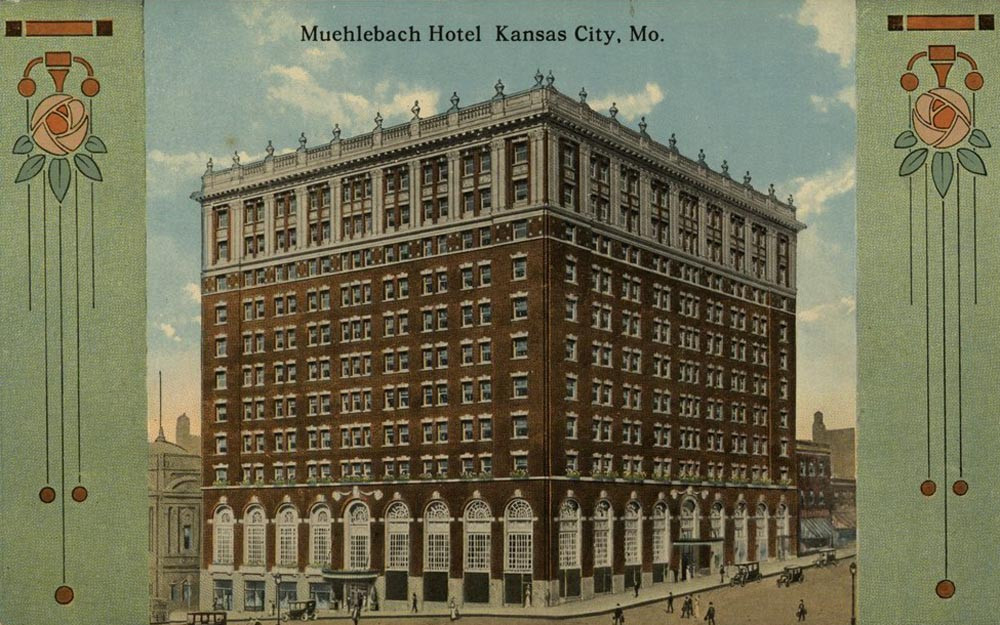
- Muehlebach: The original 12-story building was constructed in 1915. It was designed by Holabird & Rocheand, 144 feet (44m) high and owned by George E. Muehlebach, whose father, George E. Muehlebach Sr., founded the Muehlebach Beer Company. The younger Muehlebach also built Muehlebach Field, which achieved its greatest prominence under the ownership of Barney Allis. In 1952 a 17-story western annex and parking lot were added. The entire hotel underwent a major restoration in 1976 and operated for a time as the flagship of the Radisson hotel chain under the name Radisson Muehlebach Hotel before finally closing in the 1980s.
Charleston
- West Virginia, Daniel Boone Hotel, opened in 1929, closed 1981
Chicago
- The Edgewater Beach Hotel was a hotel in the far-north neighborhood community of Edgewater in Chicago, Illinois. Designed by Benjamin H. Marshall and built in 1916 for its owners John Tobin Connery and James Patrick Connery, it was located between Sheridan Road and Lake Michigan at Berwyn Avenue. An adjacent tower building was added in 1924. The hotel closed in 1967, and was soon after demolished.
The Edgewater Beach Apartments were completed as part of the hotel resort complex in 1928. The "sunset pink" apartments, complimented the "sunrise yellow" hotel in a similar architectural style. The apartments remain standing and have been listed on the National Register of Historic Places. More history --> Wikipedia - The Raymond Hotel dominates the South Pasadena landscape. It opened in 1886. The Raymond remained Southern California's leading resort hotel until Easter Sunday, 1895. On that day, an ember flew from one of the Raymond's 80 chimneys landed on the hotel's wood-shingle roof. No lives were lost, but within a couple hours the Raymond was no more. In 1901 Walter Raymond was able to rebuild and reopen his hotel. With 400 rooms, golf links, and formal gardens, the Raymond's second iteration was even grander than the first. At the entrance, a new floral display, augmented by 575 electric lights, announced in ten brightly colored letters that visitors had arrived at "THE RAYMOND." Guests then entered a tunnel -- which still exists today, though sealed, under Raymond Hill -- and ascended into the hotel via elevator. In the 1930s, facing intense competition from Pasadena's newest luxury resort, the Huntington Hotel, the Raymond was unable to remain profitable. A bank foreclosed on the aging property in 1931 and, in 1934, the Raymond was demolished.
This list is growing — with the help of our corresponding friends. Please send us names and photographs of lost hotels.
Thank you


